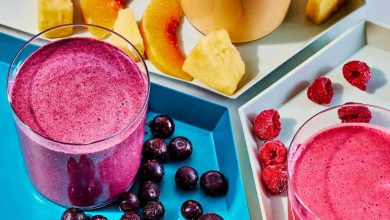
Alcohol content and place of origin must be clearly stated on wine bottle labels by law. Preservatives, chemicals, and added sugars are not mentioned. This means that it is difficult to determine precisely how much alcohol is in your favourite bottle of wine.
Switching to organic wine is best to avoid hazardous chemicals and have a better wine-drinking experience. Wine enthusiasts concerned about artificial ingredients in traditional, retail wines will find this an ideal alternative.
It has several benefits, which we’ve listed in detail below. In little time at all, you’ll see why it is becoming increasingly popular:
Wine made from organic grapes
Chemical pesticides, fertilisers, and herbicides are not used on organic grapes. Natural and pure products can be found in this type of wine.
Pesticides and herbicides are sprayed on vines and grapes to eliminate pests and weeds that threaten the plants’ health. Spray residues can contaminate your wine, the surrounding land, and waterways. One of the health benefits of this wine is that it hasn’t been treated with pesticides.
When you read the word “organic” on the label of a bottle of wine, it means that the wine was made different from conventional wines, both on the vineyard and throughout the winemaking process. To produce organic grapes, the farming procedures of a vineyard must be vastly different. To put it simply, this means using more natural techniques to manage the health and condition of their vines.
- THERE ARE FEWER SULPHITES
Antibacterial SO2 is commonly used in winemaking as a preservative because of its ability to inhibit the growth of bacteria.
If you don’t have certain enzymes to break down sulphites in your body or have severe asthma, you should avoid consuming sulfite-containing foods. People sensitive to sulphites in wine may develop symptoms such as itchy skin, hives, stomach pains, and rash.
The amount of sulphites in wine is strictly controlled all around the world. Sulphites used must be listed on any wine with more than ten parts per million (ppm) of sulphites. Sulphites may be found in European wine up to 210 ppm, but in American wine, they can be found at a maximum of 350 ppm.
Several organisations worldwide regulate organic wine, including Demeter, USDA Organic, and Ecocert. If they are a certified organic producer, their labels or badges will appear on the bottles of wine that they sell. As far as sulphites are concerned, organic wines utilise far fewer of them than their conventional counterparts. Organic wines have fewer sulfites, which results in a more natural wine with additional health benefits.
- LESS SUGAR IS ADDED TO ORGANIC WINE
The added sugar in retail bulk wine is one of its significant drawbacks. Both naturally occurring and synthetically added, Sugars can be the source of any wine’s perceived sweetness.
The highest alcohol concentration of a wine is determined by the wine’s natural or added sugar content. This encourages winemakers to add sugar throughout the process to obtain their target ABV percentage. Increasing the alcohol concentration of wine is the only goal of the winemaking process, which is known as chaptalisation. Winemakers may also employ sugar to mask the flavour of low-quality grapes used in their production.
When winemakers add sugar over the naturally occurring sugars in the grapes, the end product is sweet – something that only inexperienced wine consumers may appreciate. Winemakers add sugar. Organic wine’s lack of added sugar is one of its many health benefits. People who want to lose weight can use this since it lowers their overall sugar intake.




